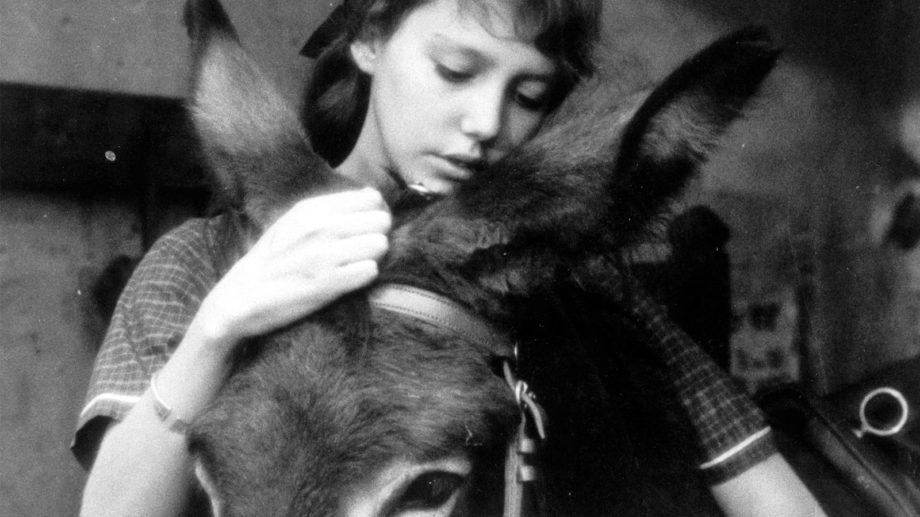The Non-Actor, a historical survey of the myriad ways in which filmmakers have used so-called amateurs to reimagine the language of cinema and to investigate—and perhaps fundamentally change—the medium’s relationship with the realities it depicts, is coming to the Film Society of Lincoln Center November 24-December 10.
Questions concerning “the real” have haunted cinema from its inception, and they have often been entwined with performance. Filmmakers have long experimented with the use of nonprofessional, untrained actors, whether to inject a measure of documentary reality into fictions, to deconstruct acting itself, or to challenge the conventions of screen performance and cinematic realism. The non-actor has emerged time and again as a totem of renewal, central to many of film history’s most consequential movements, beginning with Robert Flaherty’s subjects and Sergei Eisenstein’s principles of “typage,” continuing with Italian neorealism’s men on the street, Robert Bresson’s models, and Andy Warhol’s Superstars, and running through the work of innovators as varied as Shirley Clarke, Straub-Huillet, Agnès Varda, and Pedro Costa.
The 40-plus film lineup spans cinema history, from early examples like F.W. Murnau’s final film Tabu, shot in Tahiti, and Sergei Eisenstein’s October, on the centenary of the Russian Revolution; to modern works like Denis Côté’s study of animals at a safari park, Bestiaire, and Ronald Bronstein’s riveting Frownland. Rarities include a 16mm print of Jean Rouch’s “ethno-fiction” Jaguar; Susumu Hani’s portrait of juvenile reform school Bad Boys, which helped launch the Japanese New Wave; Spencer Williams’s visionary morality tale The Blood of Jesus; and a free screening in the Elinor Bunin Munroe Film Center’s Amphitheater of three “Movie Queen” films, made with local New England townspeople in the 1930s by itinerant filmmaker Margaret Cram.
Organized by Dennis Lim and Thomas Beard.
Tickets are now on sale and are $14; $11 for students and seniors (62+); and $9 for Film Society members. Become a member today! See more and save with the 3+ film discount package or All-Access Pass.
Acknowledgments:
Anthology Film Archives; Cinemateca Portuguesa; the Cultural Services of the French Embassy NY; Harvard Film Archive; Institut Français; Istituto Luce Cinecittà; The Jones Film and Video Collection, Southern Methodist University; Northeast Historic Film; UCLA Film & Television Archive; Peter Watkins; Valeska Grisebach; Pedro Costa; Ronald Bronstein; Teemour Mambety; Miguel Gomes
FILMS & DESCRIPTIONS
WRT = Walter Reade Theater, 165 W. 65th St.
FBT = Elinor Bunin Munroe Film Center, Francesca Beale Theater, 144 W. 65th St.
AMP = Elinor Bunin Munroe Film Center, Amphitheater, 144 W. 65th St.
Au hasard Balthazar
Robert Bresson, France/Sweden, 1966, 35mm, 95m
French with English subtitles
Bresson patiently studies the lives of a donkey and its occasional owner (Anne Wiazemsky in her debut role) in rural France. Rendering a world oppressed by exploitative, cruel relationships, Au hasard Balthazar evokes a rich tension between formal rigor and the tragic, parallel narratives personified by its two principal non-actors. Bresson, who used solely nonprofessionals in front of the camera since 1951’s Diary of a Country Priest, was reportedly upset when Wiazemsky went on to pursue an acting career (she appeared in La chinoise and married its director, Jean-Luc Godard, just one year after Au hasard Balthazar). Speaking in 1970 about the power of the non-actor, Bresson stated, “I want the essence of my films to be not the words my people say or even the gestures they perform, but what these words and gestures provoke in them.”
Saturday, November 25 at 4:00pm (WRT)
Tuesday, November 28 at 4:00pm (WRT)
Bad Boys / Furyo shonen
Susumu Hani, Japan, 1961, 35mm, 89m
Japanese with English subtitles
To appear in his first fiction feature—a disjunctive, unruly portrait of juvenile reform school inmates—after making several documentaries, Susumu Hani sought out young amateurs who had passed through juvenile detention and encouraged them to improvise on set. At the center of the movie was Hiroshi Asai, an 18-year-old thief whose imprisonment becomes the occasion for a succession of harsh and riveting setpieces: confrontations between the boys and their officers and guards; military drills; bullying regimens; escape attempts; and flashbacks to the detainee’s lives on the outside. Dropped by its initial distributor and hotly debated upon its release, Bad Boys had an immediate influence on Japanese film culture and helped launch the New Wave in which Hani would go on to have an important part. 35mm print courtesy of the Harvard Film Archive.
Thursday, December 7 at 4:30pm (FBT)
Friday, December 8 at 6:30pm (WRT)
Bestiaire
Denis Côté, Canada/France, 2012, 72m
Not all non-actors need be human. “The cinema loves to ennoble animals, to plaster them with emphasis and artificial scenarios,” Denis Côté wrote around the release of his study of the ostriches, lions, horses, zebras, camels, and giraffes at a Quebec safari park. In Bestiaire he looks long and hard at a non-human animals with as little pretense as possible. The results are gripping, varied, and sometimes sad: ponies and giraffes framed against corrugated metal sheets; ostriches staring plaintively out of their pens; a bison meeting and returning the camera’s gaze; a zebra thrashing around its barn. No commentary or framing devices distract from the animals’ performances, or from the shock of the intimacy they create.
Sunday, December 3 at 8:45pm (FBT)
Monday, December 4 at 4:30pm (FBT)
Black Girl / La Noire de…
Ousmane Sembene, France/Senegal, 1966, 59m
French with English subtitles
Mbissine Thérèse Diop’s magnetic and devastating performance in Ousmane Sembene’s feature is by turns tough, swift, and true in its aim. Diouana leaves Senegal with dreams of a more carefree and glamorous existence in France, where she procures a job as a live-in maid and nanny for a young couple on the French Riviera. She is gradually deadened by the endless routines and tasks and rhythms of life in the tiny apartment, and by the dissatisfactions felt by the husband and wife, which they project onto their “black girl.” Sembene’s “perfect short story,” wrote Manny Farber, naming it the best movie of 1969, “is unlike anything in the film library: translucent and no tricks, amazingly pure, but spiritualized.” A formative and eye-opening work, and one of Sembene’s finest. Restored by The Film Foundation’s World Cinema Project in collaboration with the Sembene Estate, Institut National de l’Audiovisuel, Eclair laboratories, and Centre National de Cinématographie. Restoration carried out at Cineteca di Bologna/L’Immagine Ritrovata Laboratory.
Monday, December 4 at 8:45pm (FBT)
Wednesday, December 6 at 2:30pm (FBT)
The Blood of Jesus
Spencer Williams, USA, 1941, 35mm, 57m
Along with Oscar Micheaux, Spencer Williams was one of the great directors of race films, movies made specifically for African-American audiences during the era of segregation, and his debut feature, The Blood of Jesus, shot in Texas with a largely nonprofessional cast on an exceedingly lean $5,000 budget, was one of the most widely seen productions of its kind. The picture concerns a woman who, near death after being accidentally shot by her husband, discovers herself at a crossroads between a heavenly afterlife and damnation. With scenes like its opening river baptism, The Blood of Jesus stands as a significant document of black religious experience in the first half of the 20th century, and a record of everyday life that Hollywood mostly ignored, yet it is also the work of a singular and daring stylist, an auteur who was able to realize visionary compositions with limited means. 35mm print courtesy of The Jones Film and Video Collection, Southern Methodist University.
Saturday, December 2 at 3:30pm (FBT)
Thursday, December 7 at 9:00pm (FBT)
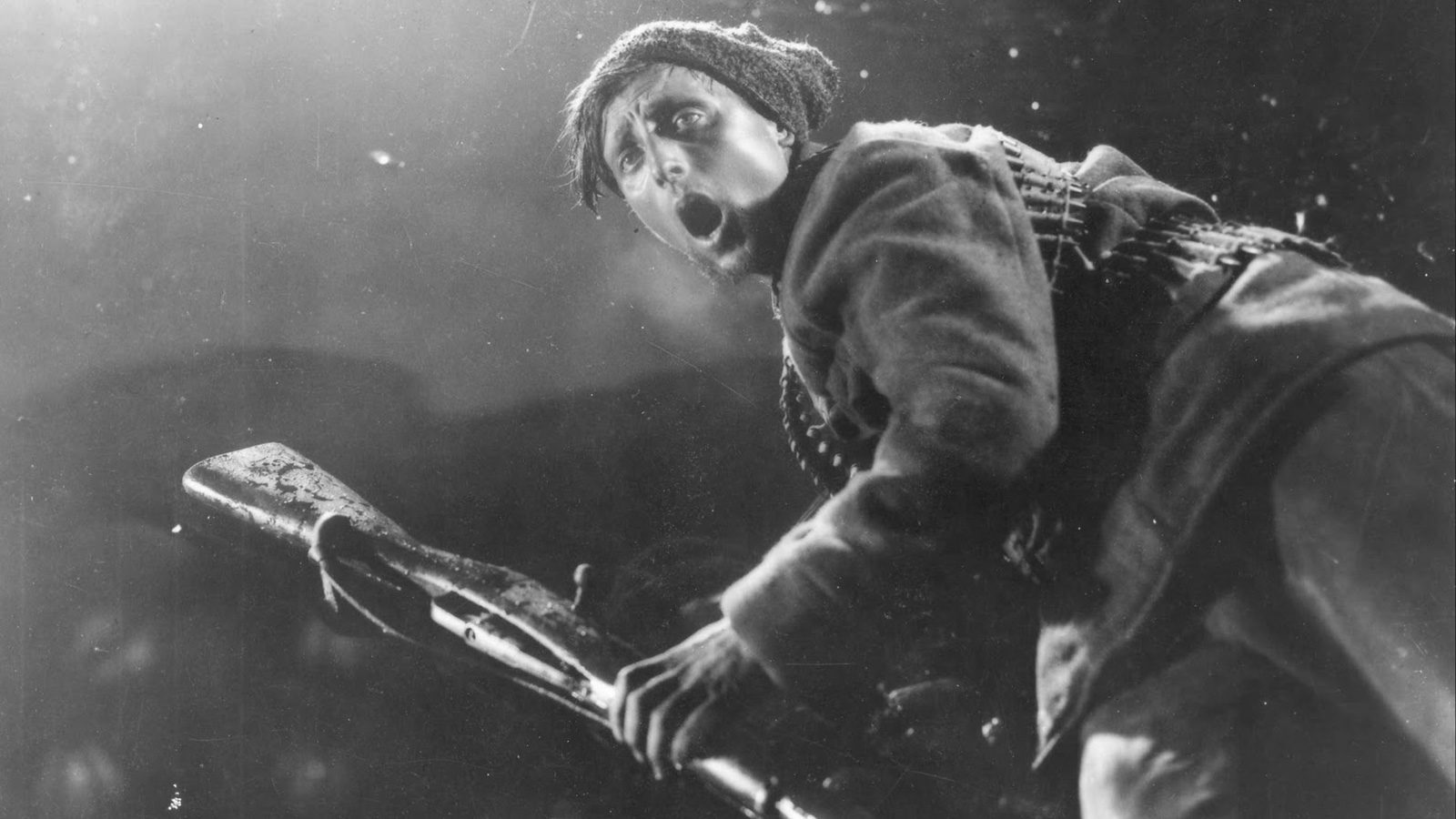
October
Born in Flames
Lizzie Borden, USA, 1983, 35mm, 80m
A feminist sci-fi cult classic, Born in Flames is set on the 10th anniversary of a socialist revolution in America, but whereas Eisenstein’s October celebrated the decennial of 1917 by striking a note of triumph, Borden’s film imagines a world in which the promises of a new society have yet to be fulfilled. We hear reports of riots erupting across the city as party organs preach incrementalism and state authorities closely surveil counterrevolutionary activity. Meanwhile an underground network known as the Women’s Army has reclaimed the streets from rapists through collectively organized vigilante justice, and pirate radio stations decry still-rampant racism and sexism, broadcasting messages to female comrades about the uprisings to come. Propelled by a driving post-punk soundtrack and featuring a nonprofessional cast Borden hoped would reflect the movie’s prospective audience, Born in Flames remains a thrilling and timely allegory of rebellion, ready to set a new generation ablaze. Preserved by Anthology Film Archives with restoration funding from the Hollywood Foreign Press Association and The Film Foundation.
Saturday, November 25 at 8:00pm (WRT)
Monday, November 27 at 4:00pm (FBT)
A Brighter Summer Day / Gu ling jie shao nian sha ren shi jian
Edward Yang, Taiwan, 1991, 237m
Mandarin, Min Nan, and Shanghainese with English subtitles
A deeply personal epic comparable in scope and impact to the Godfather movies and Sergio Leone’s Once Upon a Time in America, Yang’s extraordinary memory film stretches tautly over four hours of screen time and more than 100 speaking parts. Set in the early 1960s (Yang’s own teenage years) and inspired by the true story of Taiwan’s first juvenile homicide case, the film follows rebellious teenager Xiao Si’r (the debut role of Chen Chang, years before appearing in Happy Together and Crouching Tiger, Hidden Dragon) as he comes of age amid rival street gangs and the “White Terror” witch hunts of Chiang Kai-shek’s Kuomintang government. Few movies more readily call to mind the great, sprawling novels of the 19th century and their portraits of ordinary individuals caught in the maelstrom of a changing society.
Sunday, November 26 at 1:30pm (WRT)
Saturday, December 9 at 4:00pm (WRT)
Close-up
Abbas Kiarostami, Iran, 1990, 35mm, 98m
Persian and Azerbaijani with English subtitles
In Abbas Kiarostami’s masterful exploration of the nature of truth and cinematic illusion, a young man introduces himself as celebrated director Mohsen Makhmalbaf, and enters intimately into the life of a family under the pretext that he’s scouting locations for a new film project. Deeply suspicious, the father investigates the stranger, leading to the con man’s exposure and arrest. At this stage, Kiarostami and his real-life film crew enter the story to film the imposter’s trial. Events preceding the young man’s arrest are dramatized and reconstructed, but with the real people “playing” themselves. Close-up has been widely hailed as one of Kiarostami’s crowning achievements and one of the greatest films of the 1990s.
Saturday, November 25 at 2:00pm (WRT)
Tuesday, December 5 at 2:30pm (FBT)
Colossal Youth / Juventude em Marcha
Pedro Costa, Portugal/France/Switzerland, 2006, 35mm, 155m
Portuguese with English subtitles
Being together again will brighten our lives for at least 30 years. Costa combined various Cape Verdean immigrants’ letters home and a note written by the surrealist poet Robert Desnos to his wife shortly before his death to create the letter at the center of one of his richest, most staggeringly complex films. Its author is Ventura, an aging Cape Verdean immigrant who spends his days visiting the residents of a neighborhood that no longer exists. His wife has left him; his “children,” as he calls them, have mostly been relocated to sterile housing projects; and it is in the letter he recites throughout the movie that his hopes have all been packed. Colossal Youth was a second leap forward for Costa after the groundbreaking In Vanda’s Room. It now seems that this shadowy, profoundly sad ghost story permitted him to move from the geographically rooted studies of Fontainhas to the abstract, jagged mental spaces in which his most recent work takes place. 35mm print courtesy of Cinemateca Portuguesa.
Sunday, December 10 at 2:30pm (WRT)
The Cool World
Shirley Clarke, USA, 1963, 16mm, 125m
Based on the novel by Warren Miller about a teenager navigating the violent turf wars and internal hierarchies of Harlem gangs, and set to an unforgettable jazz score composed by Mal Waldron and performed by Dizzy Gillespie, Shirley Clarke’s The Cool World is a landmark of early American independent cinema. The film was produced by a young Frederick Wiseman, and it possesses something of a documentary quality as a result of its uptown location shooting, cast of local non-actors, and partially improvised performances. “Everything I’ve done,” Clarke declared late in her career, “is based on the duality of fantasy and reality,” and The Cool World, like so many of the works in this series, is constantly pivoting between the two.
Friday, December 1 at 6:30pm (FBT)
Tuesday, December 5 at 8:45pm (FBT)
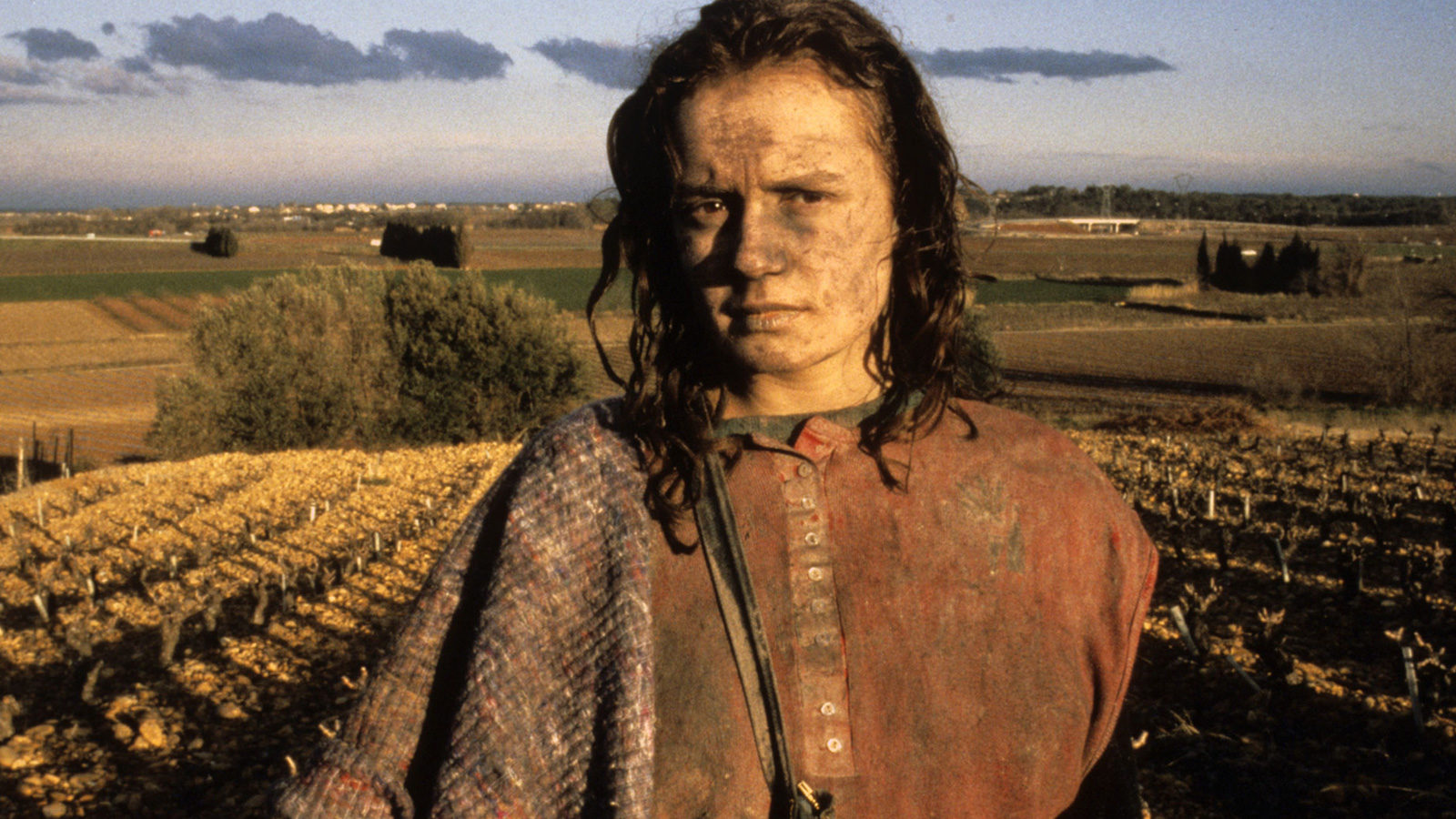
Vagabond
Dusty and Sweets McGee
Floyd Mutrux, USA, 1971, 35mm, 92m
Pam and Larry, Tip, Kit Ryder, Dusty, Sweets, Armen and Bobby Graham are real people, they are not actors. So begins, with this disclaimer, Floyd Mutrux’s first film, one of the very few works in the series to be distributed by a major Hollywood studio (Warner Bros. released the film, briefly, in the summer of 1971). An impressionistic study of the loaded life in Los Angeles starring actual heroin addicts, Dusty and Sweets McGee captures the languorous rhythms of scoring and shooting up through an artful blend of scripted and vérité episodes. Nearly impossible to see for many years, the film has its champions. “As an elegy to wasted youth,” the filmmaker Thom Andersen has written, “Dusty and Sweets McGee is irresistible. We weren’t all heroin addicts, but we all more or less wasted our youth—and I know it’s not any easier for young people today. It’s a cliché, but American movies really were better then. Movies about junkies and drug dealers have gotten a lot flashier since Dusty and Sweets McGee, but they haven’t been able to recapture its lyricism, its sense of wonder, or even its humor.”
Thursday, November 30 at 8:30pm (WRT)
Sunday, December 3 at 3:00pm (FBT)
The Exiles
Kent Mackenzie, USA, 1961, 35mm, 72m
Neglected for decades prior to its re-release in 2008 as a co-presentation of writer Sherman Alexie and filmmaker Charles Burnett, Kent Mackenzie’s The Exiles recounts a day in the life of a group of Native American twentysomethings who have migrated from Arizona to Los Angeles. Set in Bunker Hill, or rather a version of the neighborhood that has long since vanished, the picture drifts from story to story, from bar to rooming house to streets humming with neon, and what gradually develops is a moving, quasi-documentary, and unprecedented treatment of urban indigenous youth culture, shot through with the sorrow of dislocation but also flashes of vibrancy. “Instead of leading an audience through an orderly sequence of problems-decisions-action and solution on the part of the characters,” Mackenzie explained, “we sought to photograph the infinite details surrounding these people, to let them speak for themselves, and to let the fragments mount up.”
Wednesday, November 29 at 8:45pm (FBT)
Friday, December 1 at 4:45pm (FBT)
Flat Is Beautiful
Sadie Benning, USA, 1999, 50m
Preceded by:
Peggy and Fred in Hell: The Prologue
Leslie Thornton, USA, 1985, 19m
While developing his ideas around typage and non-actors, Eisenstein often looked back to earlier theatrical traditions, and in particular to the use of masks, performances based “not on the revelation of character but on the treatment of it, because a person comes on with a defined character passport.” Sadie Benning’s Flat Is Beautiful centers on a melancholy tween tomboy grappling with their gender identity in working-class Milwaukee. Rendered in Super-8 and Pixelvision, Benning’s oneirically lo-fi featurette plays like the strangest after-school special ever made, a brilliant exploration of the ways inner life can—or cannot—be read across a frozen face, in which every member of the cast sports a different paper, hand-drawn visage. It is here paired with the prologue to Leslie Thornton’s Peggy and Fred in Hell, a deeply idiosyncratic chronicle of the eponymous Peggy and Fred, two children charting a course through a post-apocalyptic landscape littered with the detritus of the 20th century.
Saturday, December 2 at 7:00pm (FBT)
Frownland
Ronald Bronstein, USA, 2007, 35mm, 106m
Ronald Bronstein met Dore Mann—the nonprofessional actor who would end up incarnating the unhinged, stammering pariah at the center of his debut feature—at a funeral. “He introduced himself to me as my cousin,” Bronstein remembered, “which wasn’t quite true.” But they were indeed distant relatives, and Mann committed to Frownland with ferocious intensity, plunging himself into the role of this self-described “troll” who lives with an arrogant roommate in a wretched Brooklyn apartment and sells disability benefit coupons door-to-door. Shot with a tiny crew and a ragtag style on 16mm, Frownland seemed utterly unlike anything else when it premiered at South by Southwest. It was a dispatch from a bleak but rivetingly energetic corner of the world. And Bronstein’s attachment to troublesome social misfits hasn’t waned since; he co-wrote the Safdie Brothers’ Good Time, for which Frownland in retrospect seems like an important predecessor.
Monday, December 4 at 6:30pm (FBT)
Germany Year Zero
Roberto Rossellini, Germany/Italy, 1948, 35mm, 73m
Italian with English subtitles
In 1947, Roberto Rossellini was searching Berlin for a nonprofessional German adolescent to play the central character in this grim vision of a young boy adrift in the city’s postwar ruins. One night he visited the circus on a lark (“he was curious to see the trick-playing elephants,” his biographer wrote) and saw Edmund Meschke, “a real circus boy” who’d been raised by “a clown and a riding master.” He resolved to audition him—not least because he bore a striking resemblance to the 9-year-old son Rossellini had lost to appendicitis the previous year. A merciless view of a child caught between the designs of a pedophilic Nazi, shady black-marketers, and his own ailing family, Germany Year Zero divided audiences at the time with its stark intensity of focus. It’s since come to seem like perhaps Rossellini’s most radical, uncompromising, and personal film. 35mm print courtesy of Istituto Luce Cinecittà.
Sunday, November 26 at 8:30pm (WRT)
Saturday, December 2 at 1:30pm (FBT)
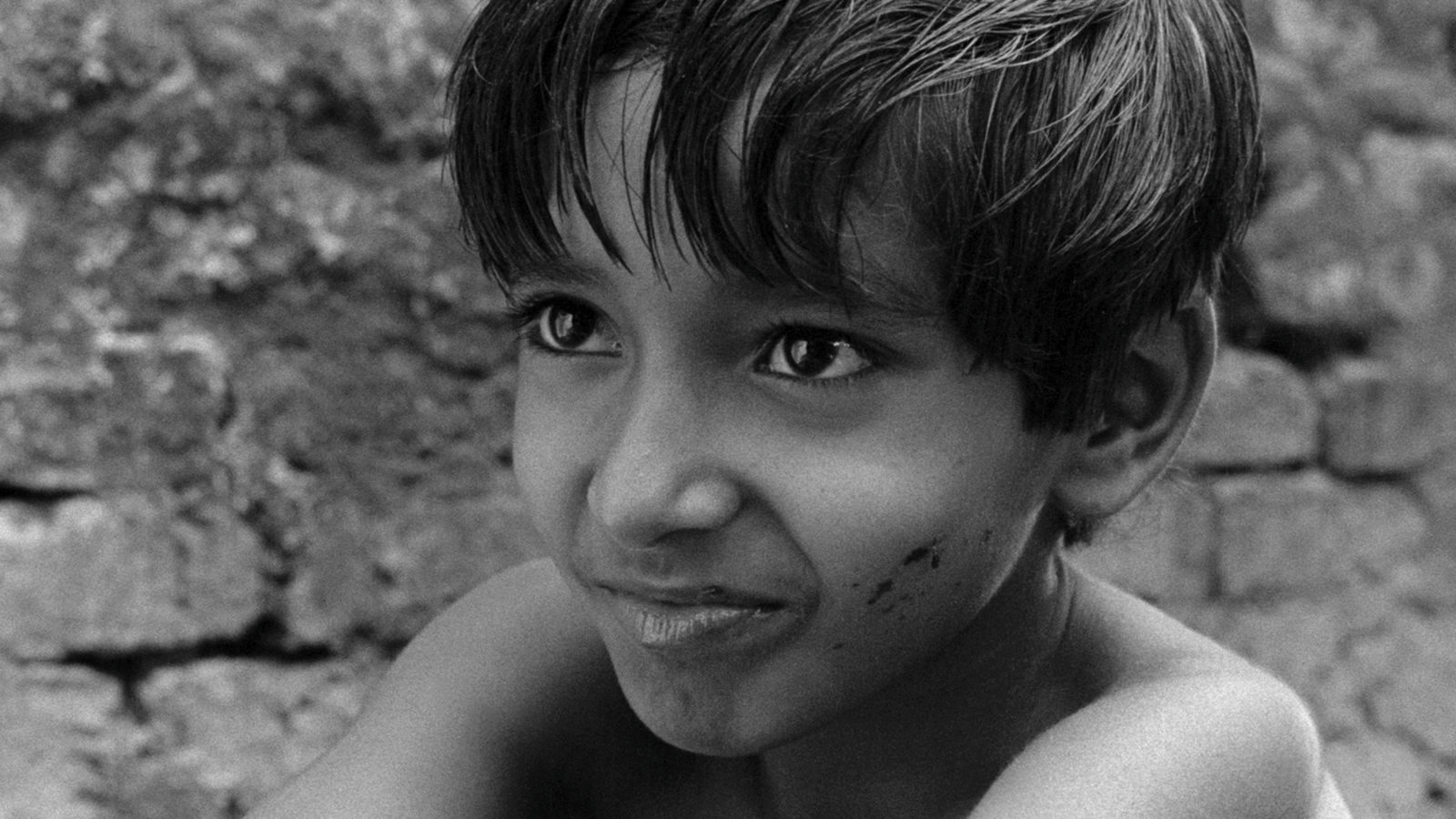
Pather Panchali
The Gospel According to St. Matthew
Pier Paolo Pasolini, Italy, 1964, 35mm, 137m
Italian with English subtitles
Pasolini’s version of the Gospel, lauded by both art-house audiences and religious groups, was shot in natural settings in southern Italy, forsaking mythic grandeur in favor of a depiction that emphasizes the political radicalism of Christ’s life, with a visual style that drew from contemporaneous documentary and Renaissance painting alike. The use of non-actors was, in particular, essential to the project. “I don’t know what it is, but the eye of the camera always manages to express the interior of a character,” Pasolini explained to filmmaker James Blue. “This interior essence can be masked through the ability of a professional actor, or it can be ‘mystified’ through the ability of the director by means of cutting and divers tricks. In The Gospel I was never able to do this. What I mean to say is that the photogram or the image on the film filters through what that man is—in his true reality, as he is in life.” 35mm print courtesy of Istituto Luce Cinecittà.
Friday, November 24 at 9:00pm (WRT)
Wednesday, November 29 at 3:30pm (FBT)
Jaguar
Jean Rouch, France, 1954/1967, 16mm, 89m
French with English subtitles
In Rouch’s first sustained experiment in the kind of “ethno-fictions” that would prove influential to so many filmmakers, three young men from Niger decide to emigrate to Ghana: each is descended from warriors, but the more immediate challenge is finding decent jobs. After an arduous journey, all three make it across the border into Ghana, at which point they separate. Ilo, who had worked as a fisherman, heads to the coast; lam, who herded cattle, tries his luck as a perfume merchant in Africa’s largest market. And Damouré becomes a “jaguar,” a young man dedicated to the pleasures of urban life. Their lives will continue to cross, separate, and then come together again; Rouch improvised much of the film, following suggestions made by his trio of non-actors based on their own experiences. 16mm print courtesy of the Institut Français.
Tuesday, November 28 at 8:30pm (FBT)
Knight’s Honor / Honor de Cavalleria
Albert Serra, Spain, 2006, 35mm, 95m
Catalan with English subtitles
Lluís Carbó was an aging former tennis instructor from Banyoles, the small city in northern Catalonia where Albert Serra grew up, when the Catalan filmmaker hired him to play Don Quixote in his first feature—a mischievous, startling, and fiercely minimalist reimagining of Cervantes. Using a “not pure HD” Panasonic camera, Serra shot the wandering knight (Carbo) and his squire Sancho Panza (Lluís Serrat, also a non-actor) passing through stunning pastoral landscapes, indulging in the moments of stillness and splendor they created. The result was a sequence of mesmerizing vignettes that could have been the moments between Don Quixote’s grand setpieces. At once scrappy and magisterial, Knight’s Honor marked the arrival of one of contemporary cinema’s great original minds. 35mm print courtesy of the Harvard Film Archive.
Sunday, December 3 at 6:45pm (FBT)
Tuesday, December 5 at 4:30pm (FBT)
Longing / Sehnsucht
Valeska Grisebach, Germany, 2006, 35mm, 88m
German with English subtitles
German director Valeska Grisebach takes her time. Since her 2001 debut Be My Star, she has made three films, including the recent NYFF55 selection Western, all of which star non-actors and involve extensive preparatory interviews with people from the regions in which she shoots. To write Longing, her wrenching portrait of love and betrayal in a small German town, she asked a number of couples from Berlin-Brandenburg about their personal lives. Out of their responses she crafted a rich story about a metalworker and firefighter who puts his blissful marriage to his childhood sweetheart in jeopardy when he finds himself falling—against all expectations—into an affair with a waitress in the town next door. Luminous, plainspoken, and utterly unpretentious, Longing is one of contemporary cinema’s great domestic tragedies.
Wednesday, December 6 at 6:30pm (FBT)
Friday, December 8 at 4:30pm (WRT)
Louisiana Story
Robert Flaherty, USA, 1948, 35mm, 78m
Though popular conceptions of documentary associate the form largely with talking heads or a fly-on-the-wall observational style, one of the form’s progenitors, Robert Flaherty, worked in a decidedly different fashion, filming staged scenarios with his subjects that were generally typical of their milieu. Louisiana Story, his final film (and a personal favorite of another key figure in the series, Robert Bresson), a kind of bucolic idyll set to a buoyant Virgil Thomson score, follows a young Cajun boy and his pet raccoon as they float along the bayou, threatened by the creeping menace of alligators that glide silently across the water’s surface. The production, however, was commissioned by Standard Oil, and these swamp-pastoral images are juxtaposed with the whip and whir of machinery from a newly arrived drilling operation, providing the work’s animating tension. “Their singular beauty,” Siegfried Kracauer said of Flaherty’s films, “is a reward for patient waiting till things begin to speak. There is much time invested in them, and, of course, the patience goes together with sensitivity to the slow interaction between man and nature, man and man.”
Saturday, December 2 at 8:45pm (FBT)
Wednesday, December 6 at 4:00pm (FBT)
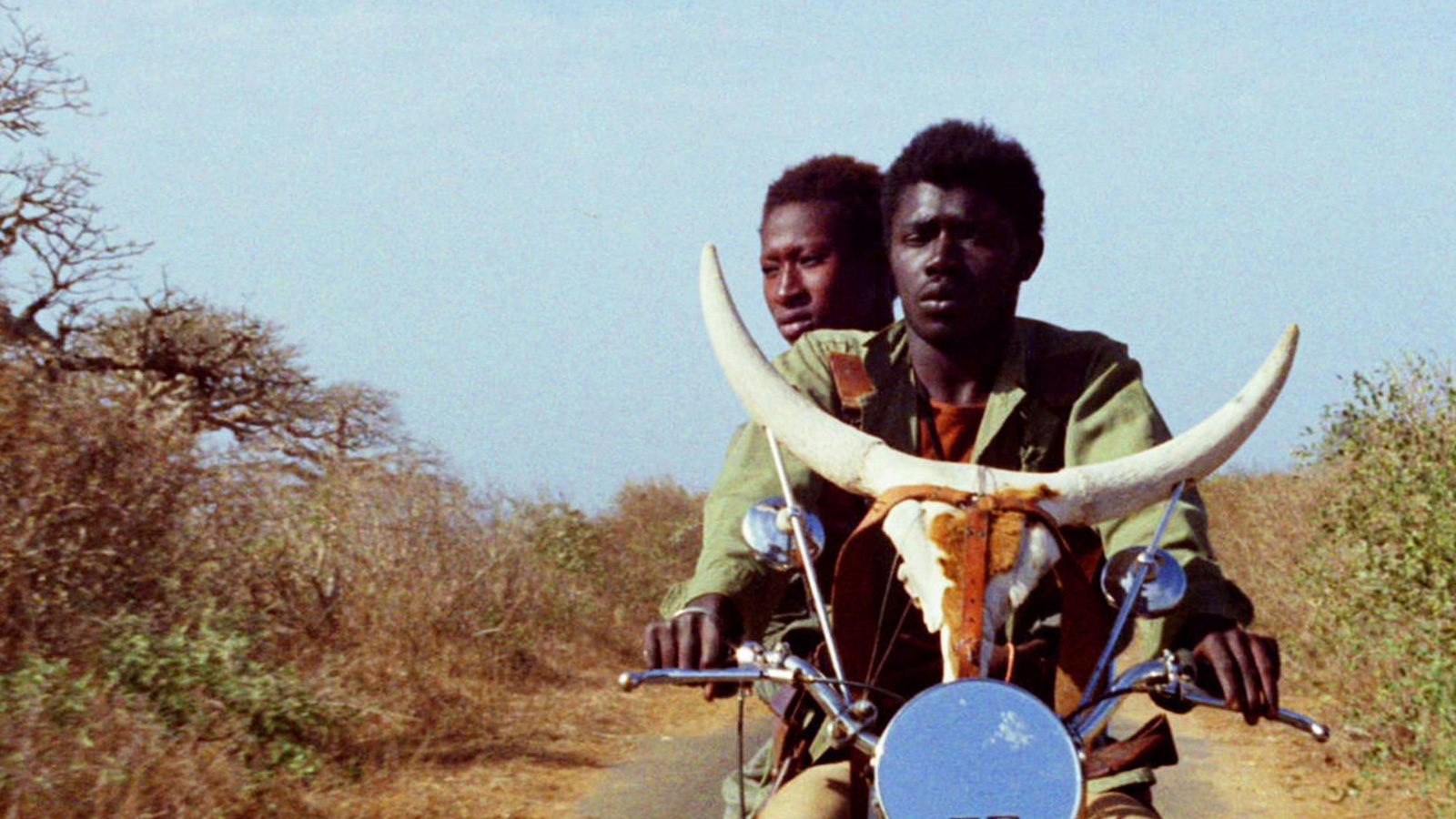
Touki Bouki
Los Muertos
Lisandro Alonso, Argentina/France/Netherlands/Switzerland, 2004, 35mm, 78m
Spanish and Guarani with English subtitles
Traversing the Argentine backcountry, long takes of inordinate beauty coalesce with images of natural horror in Lisandro Alonso’s sophomore feature. The slender thread of plot involves a convicted murderer (Argentino Vargas) and his journey upriver to see his daughter after 20 years in prison. The film is essentially a record of Vargas’s survival, meeting basic needs impassively as they arise. Though one sequence is sure to get the sensitive viewer’s goat (pun intended), Alonso delivers no less than he demands: visceral immersion in his protagonist’s precarious existence, harnessing his signature pared-down style to accentuate and embolden the physicality of time’s passage.
Sunday, December 3 at 5:00pm (FBT)
Naked Childhood / L’Enfance Nue
Maurice Pialat, France, 1969, 35mm, 82m
French with English subtitles
Maurice Pialat was already in his early forties when he made his epochal debut about a troubled, aggressive foster child bounced from home to home. Michel Terrazon, who plays 10-year-old François with a riveting combination of violence, sullenness, and tenderness, was a nonprofessional called upon to play a childhood quite different from the more stable one he had. Other figures in the film more or less played themselves: the elderly couple who takes him in; the shopkeeper who sells him cigarettes; a number of the childcare professionals we meet as his turbulent story unfolds. “Many filmmakers before and after Pialat tried to reach this level of absolute proximity between fiction and documentary, actor and character, setting and place,” Kent Jones wrote about Naked Childhood—but only he “was able to sustain such a balance throughout an entire film.” 35mm print courtesy of the Institut Français.
Thursday, November 30 at 6:30pm (WRT)
Sunday, December 3 at 1:00pm (FBT)
October / Oktyabr
Sergei Eisenstein, Soviet Union, 1928, 35mm, 103m
Russian intertitles with English subtitles
Eisenstein’s grandly orchestrated film about the Russian Revolution, commissioned for its 10th anniversary, was one of his most ambitious attempts to find a form for his theories of montage. If there is a star of October, it is the mass, the collective protagonist. This film, Eisenstein noted, “is pure ‘typage,’” a reference to the notion that a performer’s role was not to convey a psychological situation, but rather to telegraph a type, a set of moral or political associations, through their physical appearance. October is a supreme example of how an insurrectionary political will might be combined with an equally radical aesthetic program, and is being presented on the centenary of the “ten days that shook the world.” 35mm print courtesy of the Harvard Film Archive.
Wednesday, November 29 at 6:30pm (FBT)
Friday, December 1 at 2:30pm (FBT)
Othon
Jean-Marie Straub and Danièle Huillet, Italy, 1970, 88m
French with English subtitles
Straub-Huillet’s first color film, Othon (Les yeux ne veulent pas en tout temps se fermer, ou Peut-être qu’un jour Rome se permettra de choisir à son tour) adapts a lesser-known Corneille tragedy from 1664, which in turn was based on an episode of imperial court intrigue chronicled in Tacitus’s Histories. The costuming is classical, and the toga-clad, nonprofessional cast performs the drama’s original French text amid the ruins of Rome’s Palatine Hill while the noise of contemporary urban life hums in the background. Their lines are executed with a terrific flatness and frequently through heavy accents; the language in Othon becomes not merely an expression but a thing itself, an element whose plainness here alerts us to qualities of the work that might otherwise be subordinated. “If at every moment one can keep one’s eyes and ears open to all of this,” Straub wrote, “it’s possible to even find the film thrilling and note that everything here is information—even the purely sensual reality of the space which the actors leave empty at the end of each act.” A Grasshopper Film release.
Tuesday, November 28 at 6:30pm (FBT)
Thursday, November 30 at 4:00pm (WRT)
Our Beloved Month of August / Aquele Querido Mês de Agosto
Miguel Gomes, Portugal/France, 2008, 147m
Portuguese, English, and French with English subtitles
The making of a film; the touring of a family pop group; the burgeoning romance between two cousins; the varieties of life, culture, and economy in rural Portugal: for his second feature, Miguel Gomes wove enough material for four or five films into a panorama that was at once relaxed and sprawling, poignant and seductive. Gomes himself plays a filmmaker arguing with his producers about the film we’re watching, which at first seems to be a documentary—people he meets across the country tell the camera about their livelihoods—but then evolves into a fictional love story performed with unforgettable sadness by a small group of non-actors. Our Beloved Month of August remains a high point in Gomes’s career: a loose, shaggy, slyly intelligent road movie you can’t help falling in love with.
Saturday, December 9 at 8:30pm (WRT)
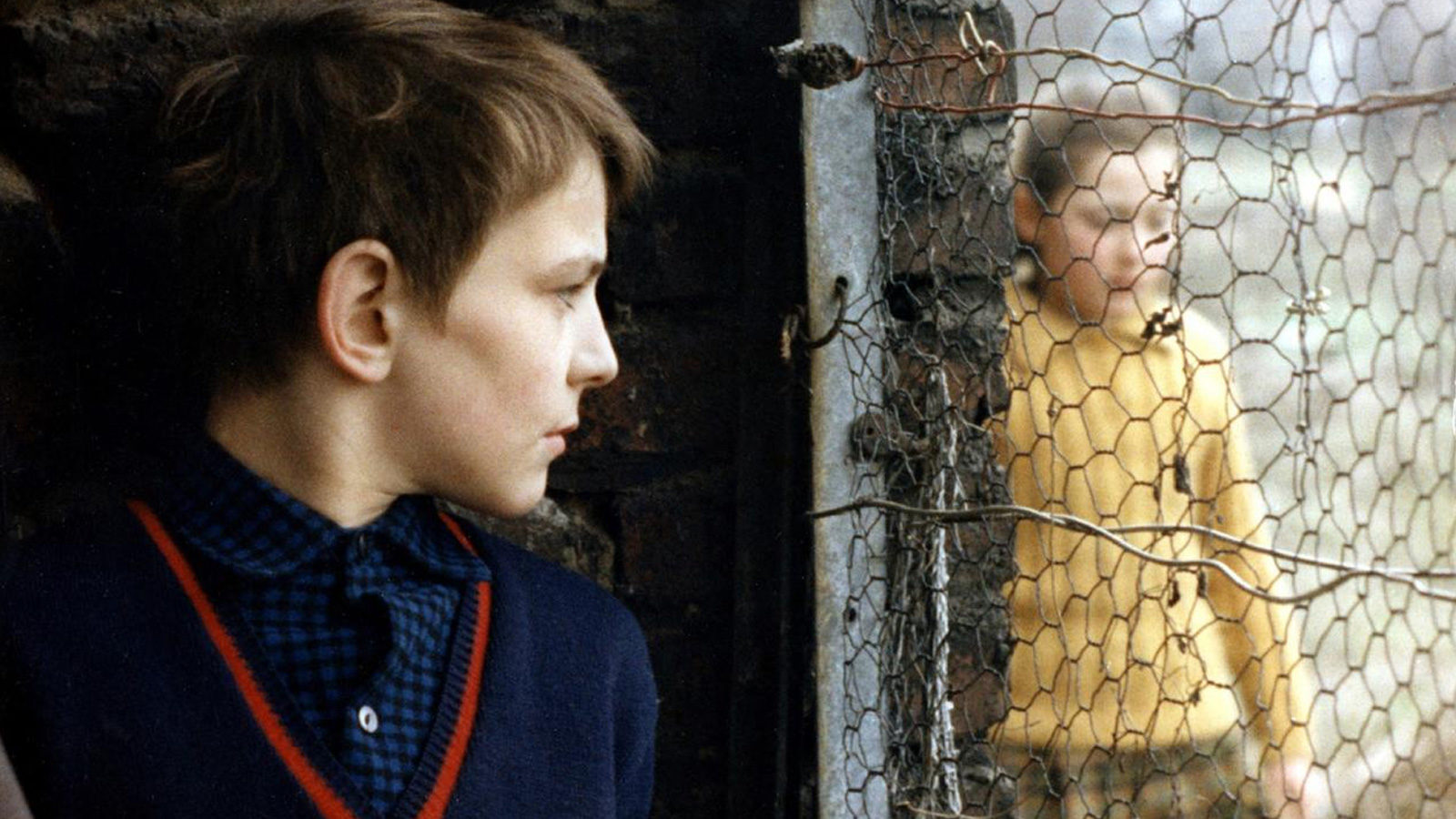
Naked Childhood
Oxhide / Niu pi
Liu Jiayin, China, 2005, 105m
Mandarin with English subtitles
In Liu Jiayin’s first film, over the course of 23 carefully choreographed shots, we watch the young filmmaker, her parents, and their cat act out a thinly fictionalized version of the life they share in a cramped Beijing apartment, where her father makes leather handbags. Liu made Oxhide when she was 23 and still at the Beijing Film Academy, and the movie’s precise, immersive attention to working-class city life brought it wide international acclaim. It was followed by a longer, even more rigorously confined sequel, Oxhide II. “As long as my family is around,” Liu wrote, “Oxhide will continue. It might be in the apartment, but we might go outside. We might go to a park. As long as we are there, no matter where we are, it’s all Oxhide… it is a subject that will go on because life will go on.”
Wednesday, December 6 at 8:30pm (FBT)
Pather Panchali
Satyajit Ray, India, 1955, 115m
Bengali with English subtitles
Set almost entirely in a remote Bengal village, Satyajit Ray’s debut changed the landscape of Indian art-house cinema and unveiled his enduring artistic voice to the world. Based on the novel by Bibhutibhushan Bandyopadhyay and inspired by Italian neorealism as well as the works of French filmmaker Jean Renoir, Pather Panchali centers on young Apu (Subir Banerjee, in his first and only film role) and the family who shapes his youth in delightful and heartrending ways. Accompanied by the incomparable ragas of composer Ravi Shankar, Apu traverses the village with wonder, curiously observing the ebbs and flows of rural life. Despite a shoestring budget and a crew of relative newcomers and non-actors—including first-time cinematographer Subrata Mitra and art director Bansi Chandragupta—Ray constructed a film of modesty and eloquence.
Friday, November 24 at 1:30pm (WRT)
Sunday, November 26 at 6:00pm (WRT)
Il Posto
Ermanno Olmi, Italy, 1961, 35mm, 93m
Italian with English subtitles
As with the earlier Italian neorealists, Ermanno Olmi generally opted to work with non-actors and frequently shot on location, but such strategies are here used to depict life during the era of rapid economic expansion following the postwar recovery. The film follows wide-eyed protagonist Domenico as he journeys to Milan to interview for his first job. There, he becomes smitten with a young woman, Antonietta, applying for a position at the same company, a blush of romantic longing counterposed with the spiritual enervation of his office’s paper-pushing maze. “For me,” Olmi once remarked, “the cinema is a state of mind and a process of analysis from a series of detailed observations,” and this attitude is very much at work in Il Posto, a tender yet unflinching look at the passage into adulthood and capitalist bureaucracy, with all its concomitant disappointments.
Saturday, November 25 at 6:00pm (WRT)
Monday, November 27 at 2:00pm (FBT)
Punishment Park
Peter Watkins, USA, 1971, 35mm, 91m
Shot in a documentary style, with non-actors cast partly according to their political sympathies, Punishment Park imagines a near-future where due process in America has been suspended as a response to increasing civil unrest, and the fates of political dissidents are instead determined by tribunal. Otherwise facing lengthy prison terms, the newly convicted opt for three days in Bear Mountain National Punishment Park, in which they must traverse a pitiless desert terrain to win their freedom, all the while outmaneuvering cops and National Guard members, for whom their capture is a gruesome training exercise. Watkins’s film may be a dystopian fantasy of another era, but its vision of state-sponsored brutality continues to correspond, unsettlingly, to our own. 35mm print courtesy of the UCLA Film & Television Archive.
Thursday, November 30 at 2:00pm (WRT)
Sunday, December 10 at 8:15pm (WRT)
Putty Hill
Matt Porterfield, 2010, USA, 85m
Preceded by:
Cry When It Happens / Llora Cuando Te Pase
Laida Lertxundi, USA, 2010, 16mm, 14m
In Putty Hill, Matt Porterfield’s keenly observed portrait of young people in a Baltimore suburb coming together in the wake of a friend’s death, the actors play versions of themselves, dramatizing their plights and pleasures in the service of fiction. “I’m interested in regular teenagers in a certain milieu,” Porterfield explained in an interview. “They‘re a part of the environment just like the backyard swimming pool or playground or skate park. It’s all part of the mise-en-scène, real kids from this real place. I look to someone like Bresson as a kind of shepherd in terms of his instinct to work with nonprofessionals in his films, the idea of the value of that, the openness.” Laida Lertxundi prefers to work with non-actors as well, though the narrative of Cry When It Happens only flirts with legibility, presenting not a story but rather an enigmatic and emotionally resonant experiment with the conventions of film’s visual syntax and our attendant expectations.
Thursday, December 7 at 6:30pm (Q&A with Matt Porterfield) (FBT)
Tabu
F.W. Murnau, USA, 1931, 35mm, 86m
“All the things you’re doing now with artificial sets,” Murnau explained to the crew of The Last Laugh, “I shall do one day in a natural one.” This would eventually come to pass with the director’s final film, Tabu (he died in a car accident just a week before its premiere). In sharp contrast to his masterful earlier studio productions, Tabu, based on a story conceived in collaboration with Robert Flaherty, was shot in Tahiti with a primarily local cast. The narrative is famously straightforward, concerning the ill-fated romance of a young couple who flee their homeland when their love is forbidden, and it possesses the enduring, elegant force of a fable. Unencumbered, at last, from the burdens of commercial moviemaking—and Western sexual mores—Murnau found tremendous poetic expression in the simplest images, like the breaking of a wave, or the slice of a blade. 35mm print courtesy of the UCLA Film & Television Archive.
Saturday, December 2 at 5:00pm (FBT)
Friday, December 8 at 2:30pm (WRT)
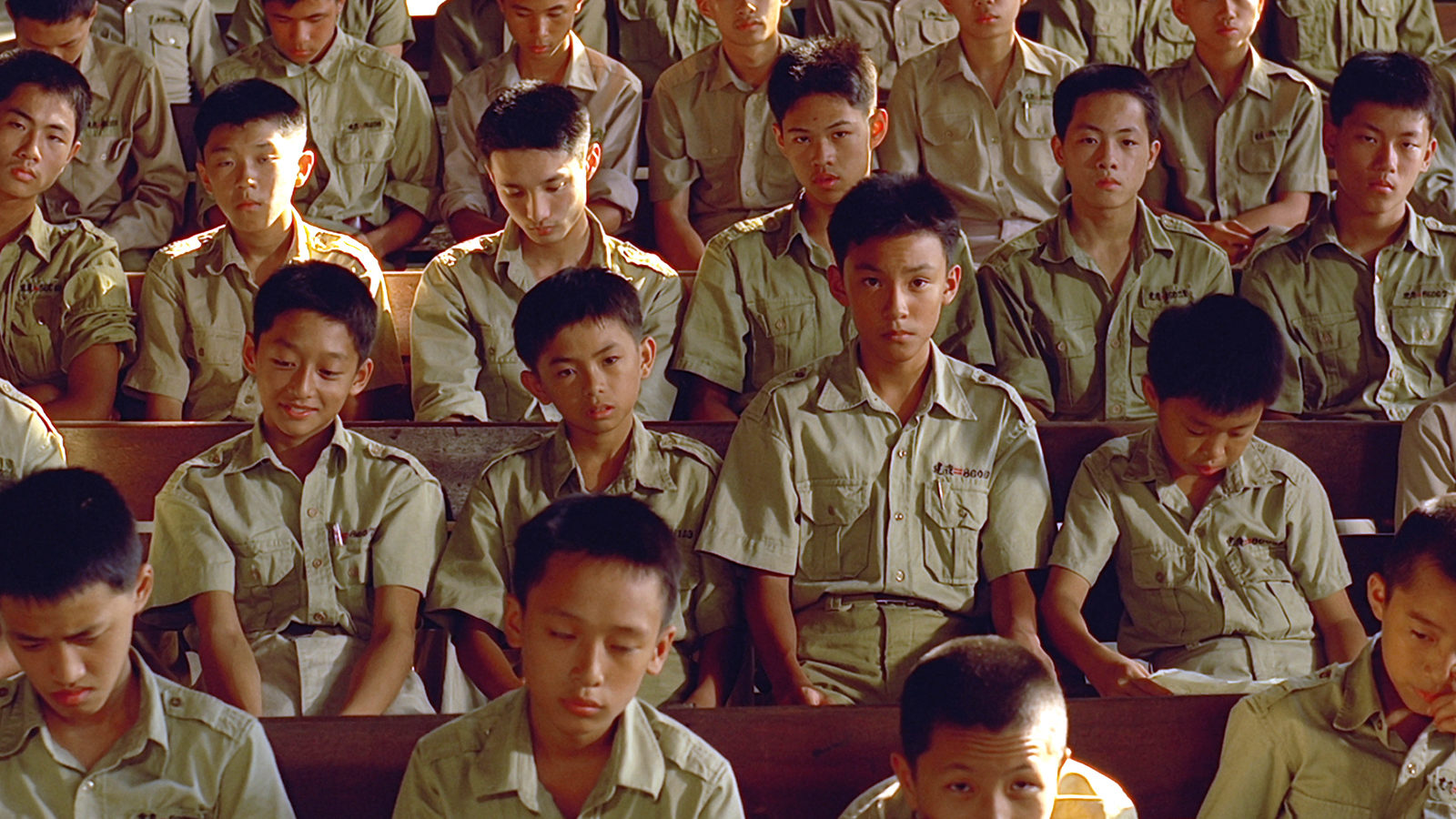
A Brighter Summer Day
Touki Bouki
Djibril Diop Mambéty, Senegal, 1973, 35mm, 89m
Wolof with English subtitles
Followed by:
A Thousand Suns / Mille soleils
Mati Diop, France, 2013, 45m
Wolof with English subtitles
“Paris…Paris…Paris…” We hear Josephine Baker croon the capital’s name in a loop throughout Djibril Diop Mambéty’s postcolonial fever dream of a film, a constant refrain that punctuates the adventures of Mory, a herder who cruises around on a motorbike adorned with a cow skull, and Anta, a university student. This pair of outsiders, strangers in their own country, dream of leaving Senegal for a new life in France, and grift their way into the money for the voyage, but the past is not always so easily left behind. A Thousand Suns, a portrait of Magaye Niang, the nonprofessional actor who played the lead in Touki Bouki, was directed by Mambéty’s niece, Mati Diop. Fusing documentary and fantasy, Diop follows Niang from a screening of the film to his farm in Senegal as the old man comes to terms with the vanished past he longs for and the future he still hopes is possible. Touki Bouki restored in 2008 by The World Cinema Foundation at Cineteca di Bologna/L’Immagine Ritrovata in association with the family of Djibril Diop Mambéty. Restoration funding provided by Armani, Cartier, Qatar Airways, and Qatar Museum Authority.
Sunday, December 10 at 5:30pm (WRT)
Three Movie Queens (TRT: 97m)
Movie Queen, Lubec, Margaret Cram, USA, 1936, 28m
Movie Queen, Lincoln, Margaret Cram, USA, 1936, 37m
Movie Queen, Middlebury, Margaret Cram, USA, 1939, 32m
Throughout the 1930s, Margaret Cram directed the same film again and again. An itinerant filmmaker based in Boston, she made her living by traveling to cities across New England and producing her Movie Queen scenarios with the people who lived there. In each iteration, the eponymous character is a Hollywood star returning to her hometown and visiting nearby businesses, the drama emerging when the Movie Queen becomes the target of a comic kidnapping plot and is ultimately rescued by a local hero. Once shot, the material was quickly processed and assembled so that it could be shown to all involved, granting participants a chance to see themselves and their neighbors in the pictures—ersatz screen idols, if only for one night. This program of three such reels affords a rare glimpse into a little-known genre of amateur filmmaking, which achieves a curious poignancy through the repetition of its design.
Tuesday, November 28 at 7:00pm (AMP)
Twenty Years Later / Cabra Marcado Para Morrer
Eduardo Coutinho, Brazil, 1984, 35mm, 119m
Portuguese with English subtitles
In 1964, Eduardo Coutinho was at work on a film about João Pedro Teixeira, who was murdered by the police as a result of his efforts to organize farm workers in northeast Brazil. The director cast non-actors in the production, including Teixeira’s widow, who plays herself, but shooting was cut short in the wake of the military coup that same year; footage was seized, a number of participants imprisoned. The project was resumed 20 years later, as the country was transitioning to a democracy, but had begun to take a rather different shape: Coutinho incorporated the earlier material as well new interviews with those originally involved and reflections on the injustices of the interval, yielding a prismatically reflexive, genre-defying essay on political commitment and life under dictatorship.
Thursday, December 7 at 2:00pm (FBT)
Friday, December 8 at 8:30pm (WRT)
Umberto D.
Vittorio De Sica, Italy, 1952, 88m
Italian with English subtitles
Screening with:
Story of Caterina / Storia di Caterina
Cesare Zavattini & Francesco Maselli, Italy, 1953, 30m
Italian with English subtitles
Carlo Battisti, a professor of linguistics from Florence, gave one of the most iconic and moving performances in world cinema in Vittorio De Sica’s transcendently melancholy study of a penniless, elderly pensioner struggling to eke out a living in Rome with his loyal dog Flike. De Sica’s fifth collaboration with the writer Cesare Zavattini, Umberto D. had a disastrous initial release, but it has come to be recognized as the great swan song of Italian neorealism, and one of the most perfect, emotionally devastating films that the movement ever produced. Zavattini and Francesco Maselli’s Story of Caterina, a segment of the omnibus film Love in the City, features Caterina Rigoglioso, a young, unwed mother adrift with her young son on the streets of Rome after being spurned by her family, reenacting this harrowing episode from her own past. This fascinating, unstable vision of neorealism taken to a limit point suggests the risks and rewards of trying, as Zavattini did, to ensure that there was “no gap between life and what is on the screen.” Both courtesy Istituto Luce Cinecittà.
Friday, November 24 at 4:00pm (WRT)
Wednesday, November 29 at 1:00pm (FBT)
Vagabond
Agnès Varda, France, 1985, 105m
English, French, and Arabic with English subtitles
One of Varda’s favorite devices, used in films from La Pointe Courte to Documenteur, is to structure her movies around fictional characters who act as foils for the non-actors who surround them. But it was only in Vagabond, one of her most celebrated features, that she filmed those non-actors trying—and failing—to figure out the movie’s main character. Mona, played in a career-high performance by Sandrine Bonnaire, has left her posh urban office job for a life on the road. The people with whom she comes into contact—a wealthy academic; a philosophical shepherd; a Tunisian laborer; an aging, giggly countess in need of company—are as fascinating and revealing a cross section of modern France as Varda has ever assembled, but the movie’s focus is squarely on Mona herself: a strong-willed young woman for whom freedom, you start to sense, is its own costly end.
Friday, November 24 at 6:45pm (WRT)
Tuesday, November 28 at 1:30pm (WRT)
Vinyl
Andy Warhol, USA, 1965, 16mm, 66m
Preceded by:
I, An Actress
George Kuchar, USA, 1977, 16mm, 9m
Though there are numerous instances in this series where the non-actor is cast in an effort to amplify the realism at play in a film, the American underground cinema of the 1960s and ’70s suggests a path in the opposite direction, in which irony helps to obliterate any pretense toward realism. In I, An Actress, George Kuchar, who with his brother Mike, began making inspired 8mm riffs on Hollywood genre tropes as a teenager in the Bronx, is seen in one of his most memorable solo outings, directing a student screen test before grabbing the reins and performing the scene himself, taking the viewer to divine heights of overacting. In Vinyl, Warhol, as elsewhere in his filmography, showcases a kind of acting degree zero, a Ronald Tavel–adapted version of A Clockwork Orange. Edie Sedgwick, seemingly superfluous to the mock-violent action on display in the fixed, crowded frame, had something of a star turn in her debut role by virtue of her screen presence alone, with all its captivating indifference.
Friday, December 1 at 9:00pm (FBT)
Tuesday, December 5 at 7:00pm (FBT)


